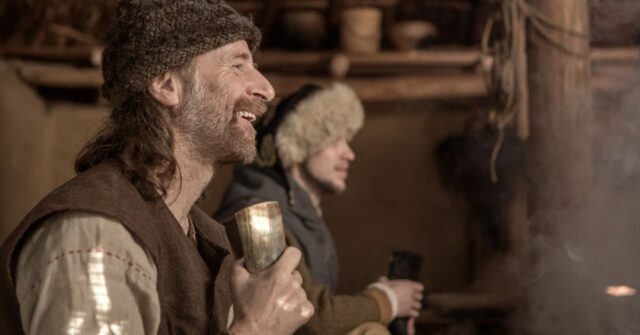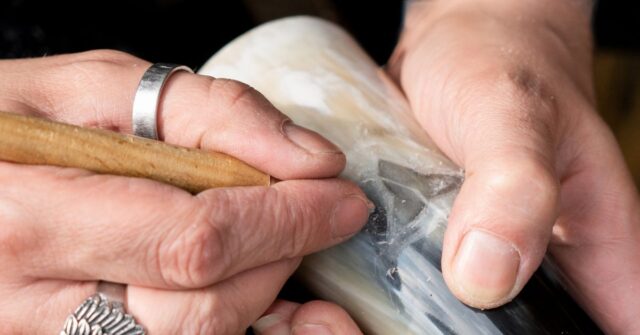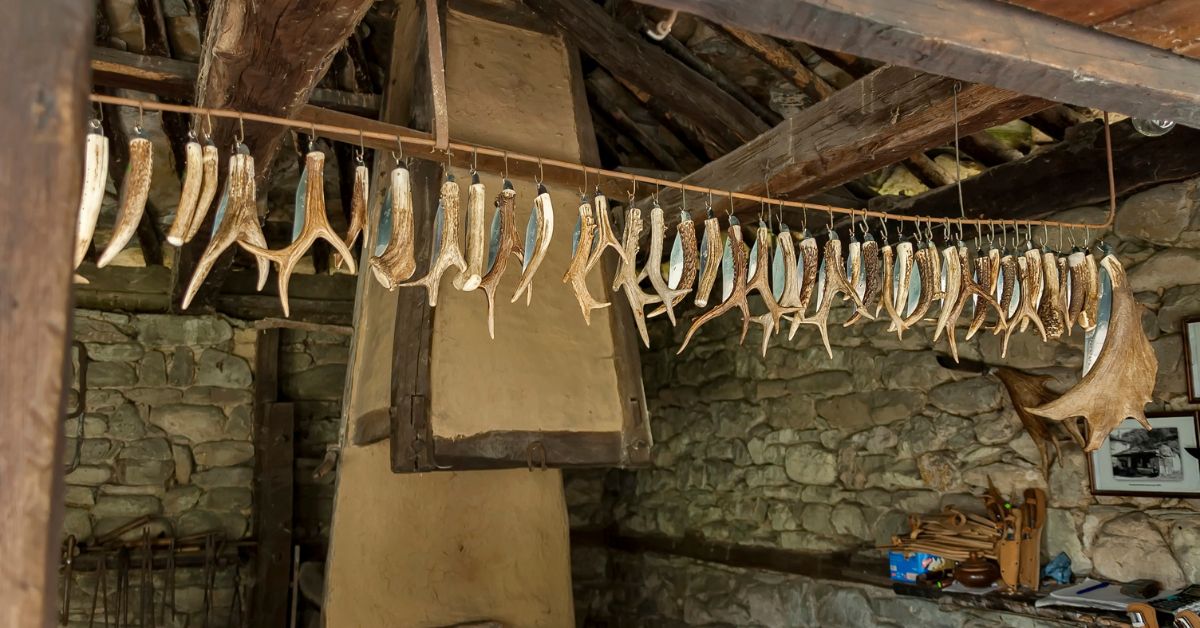Drinking horns have fascinated and intrigued people across the globe for centuries. These unique vessels have a rich history and cultural significance that spans continents and eras.
In this comprehensive guide, we will explore the origins, cultural importance, geographical spread, historical artifacts, and modern revival of drinking horns.
Whether you’re a history enthusiast or a prospective buyer, this guide will provide you with all the insights you need.
Introduction
Drinking horns, often associated with Vikings, have been used by various cultures around the world for millennia.
These vessels, made from animal horns, have served both practical and ceremonial purposes.
From ancient Thracians to modern-day enthusiasts, the drinking horn’s journey is as varied as it is fascinating. Let’s delve into this captivating history.

Origins and Early Use
The earliest known use of drinking horns can be traced back to ancient civilizations.
These vessels have been part of human culture for thousands of years, evolving in design and purpose over time.
The Thracians and Scythians
The Thracians and Scythians, ancient peoples who inhabited regions that are now part of Eastern Europe and Central Asia, were among the first to use drinking horns.
They utilized hollowed-out horns from animals like goats, rams, and bulls for drinking purposes.
The Scythians, in particular, are known for their elaborate drinking horns made of precious metals such as gold and silver, indicating their use by the elite classes.
These ornate vessels were often found in burial sites, suggesting their role in both life and death rituals.
Ancient Greece: The Keras
In ancient Greece, drinking horns were known as “keras” and were commonly used during celebrations dedicated to Dionysus, the god of wine.
Greek pottery frequently depicts scenes of revelry where participants drink from horns, emphasizing their significance in social and religious contexts.
The Greeks often crafted these vessels from bone or wood, and sometimes metal, showcasing their artistic skills and the cultural importance of communal drinking.
The Roman Empire: Glass Drinking Horns
The Romans took the drinking horn to new heights by crafting them from glass.
These beautiful and intricate glass horns were symbols of wealth and power, used primarily during feasts and important ceremonies.
The spread of the Roman Empire helped popularize the drinking horn across Europe, influencing cultures such as the Celts and the early Scandinavians.
Cultural Significance
Drinking horns hold deep cultural significance across various civilizations. They symbolize more than just drinking vessels, often embodying rituals, traditions, and social status.

Symbolism in Norse Mythology
Among the Vikings, drinking horns were more than just vessels; they were steeped in myth and legend.
Norse mythology tells of gods and heroes drinking from horns, with the most famous tale involving Thor and a magical horn connected to the sea.
Drinking horns were also used in rituals and were often passed down through generations, each new owner adding their own decorations and carvings.
Medieval European Traditions
During the medieval period, drinking horns retained their ceremonial significance, particularly in Christian contexts.
They were often used in religious ceremonies and as symbols of status among the nobility.
The transition from pagan to Christian use illustrates the adaptability and enduring appeal of the drinking horn across different belief systems.
African Rituals and Customs
In Africa, drinking horns have played a significant role in the customs and rituals of various civilizations.
For example, the Grassfield Kingdoms of Cameroon used carved buffalo horns in royal courts for drinking palm wine, a practice that emphasized respect and tradition.
These horns, sometimes replicated in wood, were cherished for their association with royalty and hunting prowess.
Native American Adaptations
Native American cultures also adapted drinking horns, though they often took the form of ladles rather than traditional horns.
The Nez Perce, for instance, used drinking horns with leather thongs for practicality during horseback travel.
These horns were not only functional but also served as memorials, with carvings signifying significant events or individuals.
Geographical Spread and Adaptations
The drinking horn’s spread across different regions showcases its adaptability and the unique ways various cultures have made it their own.

Central and Eastern Europe
In Central and Eastern Europe, the drinking horn became a symbol of both everyday life and ceremonial practices.
The Celts, known for their grand feasts, used metal-banded drinking horns as symbols of abundance and communal joy.
Archaeological finds in regions like the Balkans and the Rhineland demonstrate the widespread use and varied craftsmanship of these vessels.
Western Europe: The Celts and Anglo-Saxons
The Celts and Anglo-Saxons adopted and adapted the drinking horn from their Roman and Norse neighbors.
Celtic burial sites often contain drinking horns, indicating their importance in both life and death.
Anglo-Saxon examples, like those found at Sutton Hoo, are notable for their intricate designs and high-status associations.
Scandinavia and Viking Culture
Scandinavian culture, particularly during the Viking Age, is perhaps the most iconic for its use of drinking horns.
These vessels were integral to Viking social life, used in feasts, rituals, and even mythology.
The craftsmanship of Viking drinking horns, often adorned with runes and elaborate carvings, reflects their cultural and historical significance.

The Americas
In the Americas, drinking horns took on unique forms influenced by the materials and needs of different cultures.
Native American tribes adapted the drinking horn into practical tools for their lifestyle, while also imbuing them with cultural and spiritual significance.
The diverse adaptations across the Americas highlight the universal appeal and functionality of drinking horns.
Historical Artifacts and Findings
Numerous historical artifacts provide a window into the past, showcasing the craftsmanship and cultural importance of drinking horns throughout history.
Notable Archaeological Discoveries
Archaeological finds of drinking horns provide valuable insights into their historical use and cultural significance.
Notable discoveries include the richly decorated horns of the Scythians, the glass horns of the Romans, and the intricately carved Viking horns found in burial sites.
Each artifact tells a story of the people who used them and the contexts in which they were valued.
Museum Exhibits Around the World
Today, drinking horns can be seen in museums worldwide, from the British Museum to the Swedish Museum of National Antiquities.
These exhibits showcase the diversity and craftsmanship of drinking horns across different cultures and eras.
Visitors can marvel at the gold-banded horns of the Celts, the Roman glass horns, and the Viking artifacts, each piece a testament to the enduring legacy of these fascinating vessels.

Depictions in Ancient Art and Literature
Drinking horns frequently appear in ancient art and literature, further emphasizing their cultural importance.
Greek pottery, Roman frescoes, and Norse sagas all depict scenes involving drinking horns, illustrating their role in social and religious contexts.
Literary references in works like Beowulf and the Poetic Edda highlight the symbolic power of these vessels in storytelling and myth-making.
Modern Revival and Popularity
The fascination with drinking horns did not fade with time. Instead, they have seen a revival in modern culture, maintaining their allure and significance.
19th and 20th Century Viking Revival
The 19th and 20th centuries saw a resurgence of interest in Viking culture, spurred by archaeological discoveries and a growing fascination with medieval history.
This revival brought drinking horns back into the public eye, both as historical artifacts and as symbols of a romanticized past.
The rediscovery and celebration of Viking heritage have kept the tradition of drinking horns alive in modern times.
Drinking Horns in Pop Culture
Drinking horns have found a place in contemporary pop culture, appearing in TV shows like “Vikings” and “Game of Thrones.” These appearances have fueled a renewed interest in historical reenactments and the crafting of drinking horns.
The iconic image of a Viking warrior with a drinking horn has become a powerful symbol of strength and tradition in modern media.

Craftsmanship and Contemporary Use
Today, drinking horns are crafted with both traditional techniques and modern innovations.
Artisans carefully select and prepare animal horns, often adding decorative elements to enhance their beauty.
These modern drinking horns are used in historical reenactments and themed events by enthusiasts who appreciate their historical and cultural significance.
The continued craftsmanship and use of drinking horns highlight their enduring appeal and versatility.
Conclusion
The journey of the drinking horn from ancient times to the present day is a testament to its enduring allure and cultural significance.
Whether used in ancient rituals, medieval feasts, or modern celebrations, drinking horns connect us to a rich and varied history.
As both functional vessels and symbols of tradition, they continue to captivate and inspire people around the world.
By understanding the history and cultural importance of drinking horns, we can appreciate their unique place in human history and their continued relevance today.










